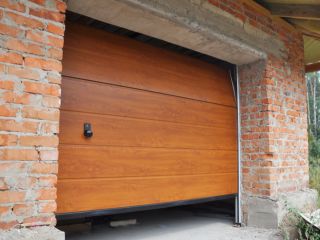
Common Mistakes to Avoid When Buying Weatherstripping for Garage Doors
Would you like your garage to stay warm, dry, and energy-efficient all year? Avoid these common mistakes when buying weatherstripping and keep your garage door performing at its best.
1. Not Measuring Properly
One of the most frequent errors is failing to measure your garage door’s height and width accurately. This can lead to buying too little or too much weatherstripping. Always measure twice and consider ordering a little extra to ensure a snug fit, especially for bottom inserts which may need to be folded and reinserted for a tight seal.
2. Choosing the Wrong Insert for Your Retainer
Garage doors use different types of retainers (T-shape, D-shape, bead, etc.), and not all weatherstripping inserts are compatible with every retainer. Make sure you match the insert style and size to your door’s retainer for a secure and effective seal.
3. Mixing Up Residential and Commercial Products
Products designed for commercial doors may not fit or function correctly on residential garage doors. Always check that you’re purchasing weatherstripping specifically intended for your type of door.
4. Ignoring Local Climate Conditions
Different climates require different weatherstripping materials. For cold or coastal regions, opt for synthetic rubber or other high-durability products that can withstand extreme temperatures and moisture. Vinyl may not last as long in harsh conditions.
5. Using the Wrong Width or Thickness
The width of your weatherstripping insert should be at least twice the thickness of your garage door. For example, a 2" thick door should use a 4" wide insert. Using the wrong size can leave gaps and reduce effectiveness.
6. Skipping Surface Prep and Installation Steps
Dirty or uneven surfaces can prevent proper adhesion and sealing. Clean the area thoroughly before installation, and avoid over-nailing or crushing the strip, which can ruin the seal. Pay special attention to corners and joints for a continuous barrier.
7. Forgetting Regular Inspection and Maintenance
Weatherstripping wears out over time, becoming brittle or cracked, especially in extreme temperatures. Inspect your seals regularly and replace them as needed to maintain energy efficiency and prevent water, pests, or drafts from entering your garage.
Additional Tips for Effective Weatherstripping
- Start with the Top Edge: When installing, begin at the top of the door and work your way down the sides for the best fit.
- Choose Quality Materials: EPDM rubber and hybrid PVC/aluminum options offer superior durability and weather resistance.
- Lubricate Regularly: Use a silicone-based lubricant on PVC weatherstripping every three months to maintain flexibility and airtightness.
- Replace Every 2-3 Years: Most weatherstripping materials need replacement every couple of years for optimal performance.
- Seal All Sides: Install weatherstripping on the top, sides, and bottom of your garage door for complete protection.
In Conclusion:
Don’t let small mistakes lead to costly repairs or energy loss. If you’re unsure about measuring, choosing, or installing weatherstripping, contact Garage Door Repair Chanhassen for expert assistance. Our trained technicians ensure the right fit and material for your climate and door type, keeping your garage comfortable and secure all year long. Schedule your inspection or installation today and experience the difference professional service makes!
For more on weatherstripping standards and approved materials, visit the California Public Utilities Commission’s official guide.

